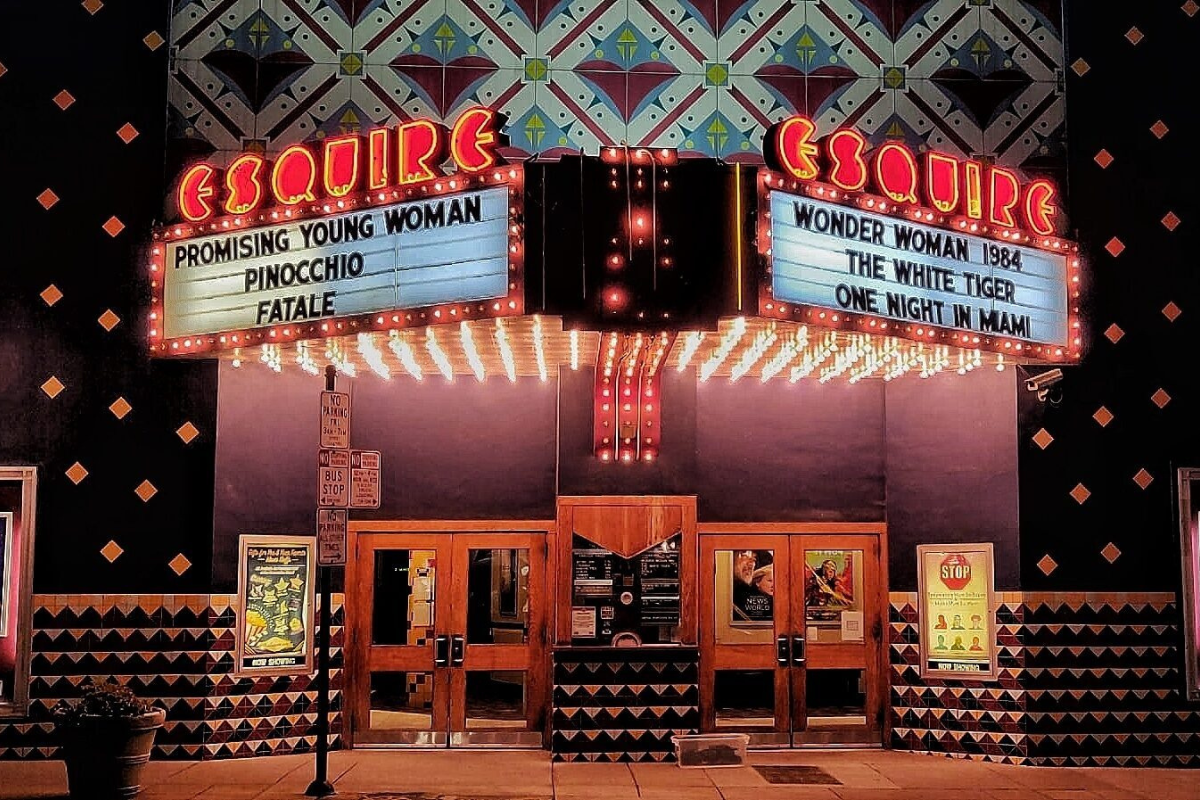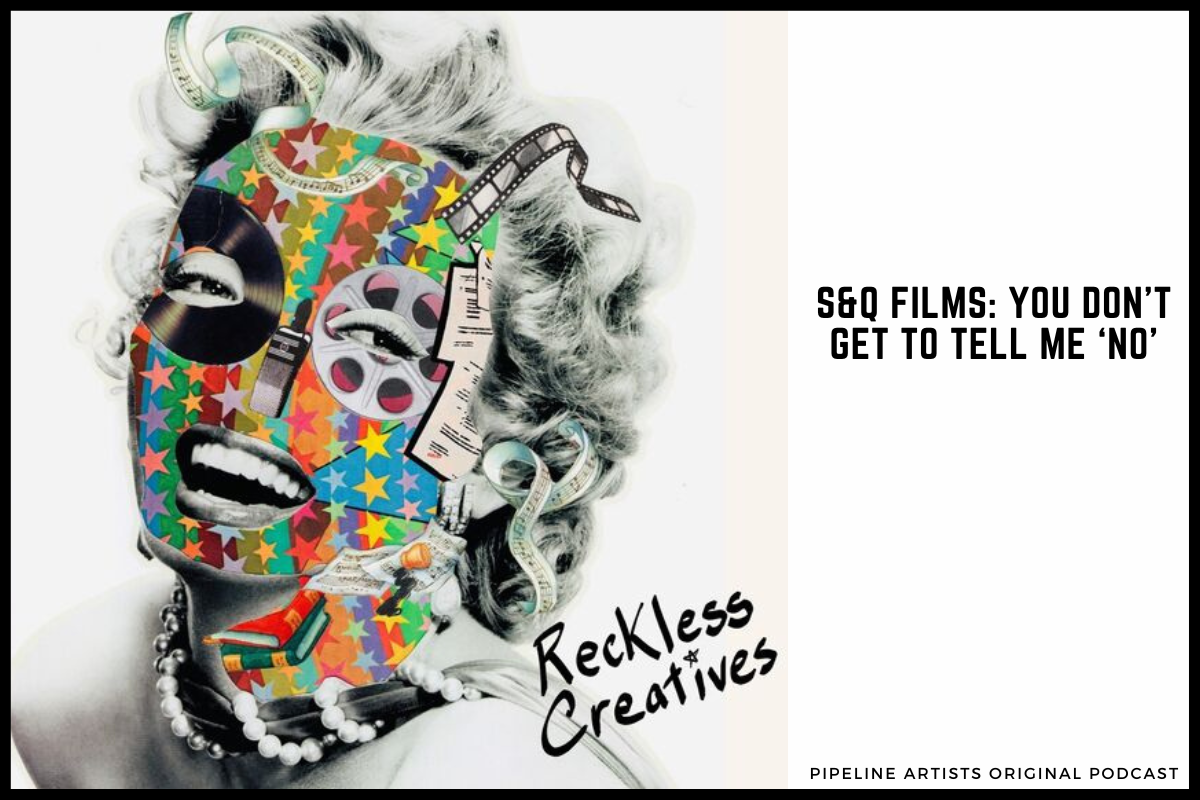A Brief History of the Web Series
If feels silly to write a “brief history” of online, serialized content—since its history is, itself, so brief. In less than a decade, the online video industry has moved from a disconnected hodge-podge of animated shorts to a multi-billion industry.
If feels silly to write a “brief history” of online, serialized content—since its history is, itself, so brief. In less than a decade, the online video industry has moved from a disconnected hodge-podge of animated shorts to a multi-billion industry.
The ascending path of Internet-delivered video series—or online content or Web television or “new media” or whatever you want to call it—has been our own path. We, as artists and businessmen, have endeavored to both live amongst the growing community of show creators, but also cover their stories for the pages of Script magazine.
In 2007, we were approached to write an article about “new media” for Script, our first. As producers of our own Web series Flipper Nation, we had our hands in the medium before there even was a thing called a “Web series.” For us, it was accidental, but in hindsight, we were part of a larger movement.
What follows is our story and our coverage of Web series over the past three years. The industry is moving quickly, and as more people are drawn to online content, there are many who don’t know how to jump in. This can serve as a primer for anyone interested in joining the movement.
Late 2005
Prior to 2005, there were a handful of Web sites devoted to regularly delivered online video content. Icebox and Atomfilms were among the first, dating back to the 90s. But their audience was relatively small, as most Americans had slow, modem-based Internet connections. Videos were expensive to host, expensive to stream, and there wasn’t a mature advertising to industry in place to help make these sites profitable. Many of these early Web sites died out during the fallout of the first dotcom bubble in 2000-2002.
By 2005, a small group of individuals, however, began to discover the power of putting their videos online. They weren’t doing it for business reasons—they were doing it to spread their voice and establish credibility. Young artists, comedians, and film enthusiasts began posting videos online—in hopes of getting seen on one of the new “social networks” – like Friendster or MySpace.
Perhaps the best known from this early era was a comedy threesome called “Lonely Island.” Their series of shorts led to awards show writing gigs and a pilot deal at the FOX network. During the summer, Saturday Night Live hired the team (including Andy Samberg) to join their show, hoping their unique videos would be a “shot in the arm” during a down period of the show’s history. In December 2005, Samberg and Chris Parnell performed in a SNL Digital Short called "Lazy Sunday,” which was uploaded to YouTube – a new site that made it easy to post and share online videos. For most people, this was their first introduction to YouTube, as the video was shared and forwarded millions of times.
The instant popularity of YouTube opened the eyes of millions of digtal video creators, who began uploading millions of videos, both legal and illegally ripped from television or DVDs. Studios, agencies, and traditional Hollywood businesses didn’t know what to make of YouTube. But average people did—they began posting personal “home videos” of their children and cats and personal diaries called “webcam confessionals” or “vlogs.”
Lazy Sunday wasn’t a series, but it did open the floodgates of online video.
2006
In 2006, the early mantra for Web video was “keep it short and sweet.” Anything over three minutes long was considered unwatchable. Entertainment studios were interested in the space but very few saw an immediately profitable future in online video; there wasn't a consistent audience yet. Corporate advertisers were curious, but couldn't figure out how to justify an ad spend in an unfamiliar medium.
That year, Bob worked in the Alternative TV department at a well-respected agency in Hollywood, so anything that wasn't a scripted TV show was sent his direction. This included a lot of “new media” series concepts. He saw an opportunity to create his own Web series, so he partnered with Alec—a tech-savvy Web designer and producer in his own right – and together we created the online mockumentary Flipper Nation. The three episodes of comedy series were viewed over 500,000 times and netted us meetings at ABC, HBO, Sony, and more. Those meetings led to a pilot presentation and many, many show pitches.
Other notable Web series launched in 2006:
AskANinja
Sam Has 7 Friends
Goodnight Burbank
User-Generated Content (UGC) became huge starting in 2006. So many people had a personal camera, that it seemed anyone could post a video. Most of it was largely fare you’d see on “America’s Funniest Home Videos,” but a few videos went "viral" like the two “scientists” performing experiments with Diet Coke and Mentos.
Video Bloggers (Vloggers) became big as well. Like mini-talk shows for the Web, they didn’t have high production values, but they allowed an individual with a point of view to share their voice.
Some popular vloggers from 2006:
Ze Frank
Rocketboom
Vlogging & USG are important to the history of the Web series because as the medium evolved over time, most of the successful shows are not simply "TV junior." They are concepts that fully utilize all the Web has to offer. Besides telling a story, these series are social, interactive, and a lot of them cater to a Web-only audience. The AskANinja series mentioned above is a perfect example because it is a comedy spoof on the video blog.
This is especially the case with one of the most famous online series launched in the summer of 2006, LonelyGirl15. LonelyGirl15 was a completely fictional video blog that racked up millions of views and a huge following because the creators engaged the established world of video bloggers. Viewers thought the girl in the video was real until a year into the series when fan buzz forced the creators to out the girl as an actress. Watch the very first episode here: LonelyGirl15
We can’t help but mention series French Maid TV. At the time, creator Tim Street was one of the few independent producers who managed to land sponsorships for his episodes. His brand advertisers would commission a how-to video beautiful French maids expertly showcased the brand’s product or service. Sex sells. Watch here: French Maid TV
2007
One of the first fully-branded Web sites devoted to online video launched in 2007 thanks to Budweiser. The site was called Bud TV and it failed to draw an audience. Although considered a disaster due to its immense costs, the industry learned a lot from its failure. Most importantly, they learned that videos need to be easily accessible. Because it was connected to Budweiser, users had to prove they were 21 years or older into order to log in and watch their content. This was a step that alienated many viewers. After all, an Internet user is always “one click away.”
A few other notable Web “networks” did grab a toehold in 2007. Although some of these networks had been around for a few years longer, their organic ground-up approach allowed them to grow at the same pace of the industry. They work by either aggregated independently produced content or actually acquiring the rights to a show and paying for production. They then incorporated ads into the viewing and sometimes offered to split ad revenues with the original owners.
Some popular networks and their popular shows:
My Damn Channel
•Wainy Days
•You Suck at Photoshop
Next New Networks
•Indy Mogul
•Barely Political
Revision3
•Diggnation
Other notable Web series started in 2007:
• The Guild - The Guild helped finance its first season by asking for donations from their dedicated fan base.
• Prom Queen - Prom Queen was created by the same team that created Sam Has 7 Friends and aired daily 60-second episodes over 12 weeks.
• Afterworld - Originally created for Bud.tv, the creators of Afterworld figured out how to turn a profit by selling the concept internationally.
Also in 2007, digital studios attached to large traditional media slowly emerged:
• Sony bought a Web video aggregator site called Grouper.com and renamed it Crackle.com to showcase both shows from their internal library as well as original content.
• ABC created their own online studio called Stage 9 Digital, with a stated goal of lining up sponsors for their original online shows before they went into production.
• Will Ferrell launched the website FunnyorDie.com which featured comedy videos.
2007 marked the first time when ABC.com made it possible to play full episodes of their shows on their Web site.
In November of 2007, the WGA Writer’s Strike began in Hollywood. This put a halt in production around the entertainment industry. Traditional media companies and viewers alike began looking online (among other places) for their content. And out-of-work creators started doing the same…
2008
In 2008, traditional talent agencies created online divisions to sign and monetize a new kind of talent: online producers, writers, and directors (oftentimes the same person). There was definitely a growing audience but still, most series had a short run and then they were left for the next project when the viewers didn’t show up.
Probably the biggest Web series disappointment of 2008 was the failure of the series Quarterlife to successfully transition to TV. The show was created by Marshall Herskovitz and Edward Zwick who also created popular TV shows like Thirtysomething and My So-Called Life. Originally the series aired on MySpace.com, but based on their pedigree and the lack of new shows due to the Writer’s Strike, NBC licensed the series. They assembled an hour-long episode from five or six online webisodes. The TV premiere aired only once. It did so poorly NBC pulled it immediately.
What’s interesting is that even though every one in the online community wanted this to succeed, everyone knew it was going to fail. We interviewed Marshall for Script magazine a few weeks before the show aired, and we could tell he felt this, too. Quarterlife was a show that was very successful on MySpace.com. On that site it sustained a nice size audience of around 200,000-300,000 views per episode. Even ten times those views would be a disaster on a network such as NBC. The show is no longer available on Myspace, but you can watch an episode on Youtube.
Easily the biggest highlight of 2008 was the success of the Web series, Dr. Horrible’s Sing-A-Long Blog. It was created by another TV veteran, Joss Whedon who created shows like Buffy the Vampire Slayer and Firefly. The show starred Neil Patrick Harris among a few other larger names. Whedon produced it on a small budget and called in tons of favors, but the end result was an extremely entertaining project, huge viewership and tons of exposure. Its success gave the Web series credibility it desperately needed. Unfortunately, it has since been taken off most video site, and this is the only link to it I can find online – if you’re really interested, please go download it on iTunes. It’s worth it.
In traditional TV, Fox and NBC joined the likes of ABC and started airing full-length episodes of their shows on the newly launched website, Hulu.com. It has since become a go-to site for both traditional TV and original Web series.
It was around this time a number of traditional networks also began capitalizing on their Web savvy audiences. Shows like The Office, Dexter, Weeds, Battlestar Galactica, and 30 Rock started to have Web series that “accompanied” their existing content. These episodes existed online only with ancillary cast members and usually lived on the official website of the show.
On the sponsored front, 2008 saw some nibbles but still no bites from large brands. One of the first branded series to find success was an IKEA sponsored show starring actress Illeana Douglass called, Easy to Assemble. Watch it here: Easy to Assemble.
At this point most sponsorship or integrations were made by more progressive brands or brands that only existed online. For example, the show Back on Topps, which is about two executives who work for the Topps trading card company, won awards for integrating the product, Skype. Watch an episode here: Back of Topps.
Other notable Web series from 2008:
•Web Therapy – starring Lisa Kudrow
•The All-For-Nots
2009
2009 saw even more growth in the online Web series world. Home internet speeds caught up to those at work and more people were watching online everywhere. This didn’t mean that everything was going well though.
60frames, an online-only production studio which invested aggressively in original Web series in 2008, folded in 2009 after not receiving the brand backing they were expecting. Likewise, ABC’s digital studio, Stage 9 Media also folded after brands didn’t give them the attention and financing they needed.
Still despite some of these setbacks, a large consortium of industry experts created a group called the International Academy of Web Television (IAWTV) which made up the voting body for the Streamys, an inaugural award show which took place in March of 2009 to celebrate the Web video creative community.
Dr. Horrible dominated the evening and won across most categories. Its success at that award show helped keep the medium extremely relevant. It even led to a brief cameo during the 2009 Emmy telecast, which Neil Patrick Harris hosted.
In 2009, Sony's online division, Crackle, became one of the few companies who figured out a business model for the Web series. They did this by treating their Web series like an independent film. First they would fund a low-budget genre movie and structure the script so that it can air online in 10-minute segments. Later they edited the series into a 2 hour DVD. They sold ads against the first online airing of the content, they made money from DVD sales and rentals, finally, they sold both the internet version and DVD to international markets.
Crackle.com released a few projects this way – here are three of them to check out:
•Angel of Death
•Woke Up Dead- Starring Josh Heder aka Napoleon Dynomite, and partially sponsored by Kodak.
•The Bannen Way
Even with the demise of a number of online studios, NBC/Universal dipped their toes into sponsored original programming.
•In Gayle We Trust – sponsored by American Family Mortgage
•Crtl – sponsored by Nestea
Other notable Web series in 2009:
2010 and Beyond
So far, 2010 has seen more expansion, more production and further monetizing of original Web series. Larger brands are showing up to the table looking to invest in their own Web series. They’re realizing that for a fraction of a traditional media buy, brands get to be much more involved in a new media production.
They are approaching trusted production entities with proven track records or they’re simply going through their existing ad agencies. The challenge still remains for these series to be seen as more than an extra long commercial. Traditional media realize this and they’re hiring writers who will be able to tell the story appropriately (see our article in the Sept/Oct Issue of Script which talks more about this).
A few branded Web series:
•Real women of Philadelphia
•Orbitz Dirty Short Campaign - humor videos made by DumbDumb, Jason Batemen’s company.
Brands have also showed up to either sponsor the more seasons of an existing show, or have invested in multiple seasons of their original shows. Some have simply bought traditional banner ads and overlays similar to a traditional model, so no integration is needed. This sponsorship money means a better looking product and a bigger payout for the creators.
Some shows we mentioned above going into multiple seasons:
The Guild (Season 4)
Back on Topps (Season 2)
Diggnation (Season 4)
In Gayle We Trust & Ctrl (both in Season 2)
Easy to Assemble (Season 3)
Wainy Days (Season 4)
Dr. Horrible (Season 2 coming out in 2011)
For more information on recent branded Web series, check out this recent article in Adage.com.
The advanced game console is another area that is directly affecting the Web series world. Consoles such as Xbox360 and Playstation which connect to the Internet create yet another outlet for distributing online originals. One major difference is that now you can watch online videos in a more relaxed setting on your couch and on a large screen as opposed to up close on your laptop. The challenge then becomes competing with traditional TV. With services like Netflix available this way as well, and it remains to be seen if online originals will find a seat at the table…or couch.
Mobile smart phones are about to run into the same problem. Although more mobile, most smartphones can play video easily and with technology and data plans growing, they’ll be competing too. And finally there are tablets such as the iPad and the Kindle which have the ability to play video.
The traditional media company is very aware that content, original or otherwise, continues to become more easily available online, but in their defense, it’s hard to pay too much attention to the Web when you take a look at the numbers. The TV industry is a 70 billion dollar a year industry vs online which just broke one billion dollars this year. This recent article in Media Post outlines this issue.
With all that money still in traditional media most Web series creators that we’ve met still want to produce and create for traditional TV. And so do many studios. For example, Fox’s Web studio 15Gigs (www.youtube.com/user/15Gigs) specifically looks for projects to develop that they think they could eventually bring to TV. Plus most actors and writers still use a Web series as a “calling card” for their work.
And why not? After all, the actress who played Bree in LonelyGirl15 has gone on to a steady acting career in Hollywood, and the creators behind LonelyGirl15 have gone on to be a forerunner in online media. Similarly, the Web series, Children’s Hospital that was created by thewb.com in late 2008 made the transition to cable this summer and currently airs on the Adult Swim channel. And soon Youtube sensation Fred will be starring in his own feature film.
For the past few years the Web has been described as the “Wild West” of media, but as business models have evolved, it seems like there’s a little more structure to the world. Hopefully there are a few more surprises in store for us as well.







